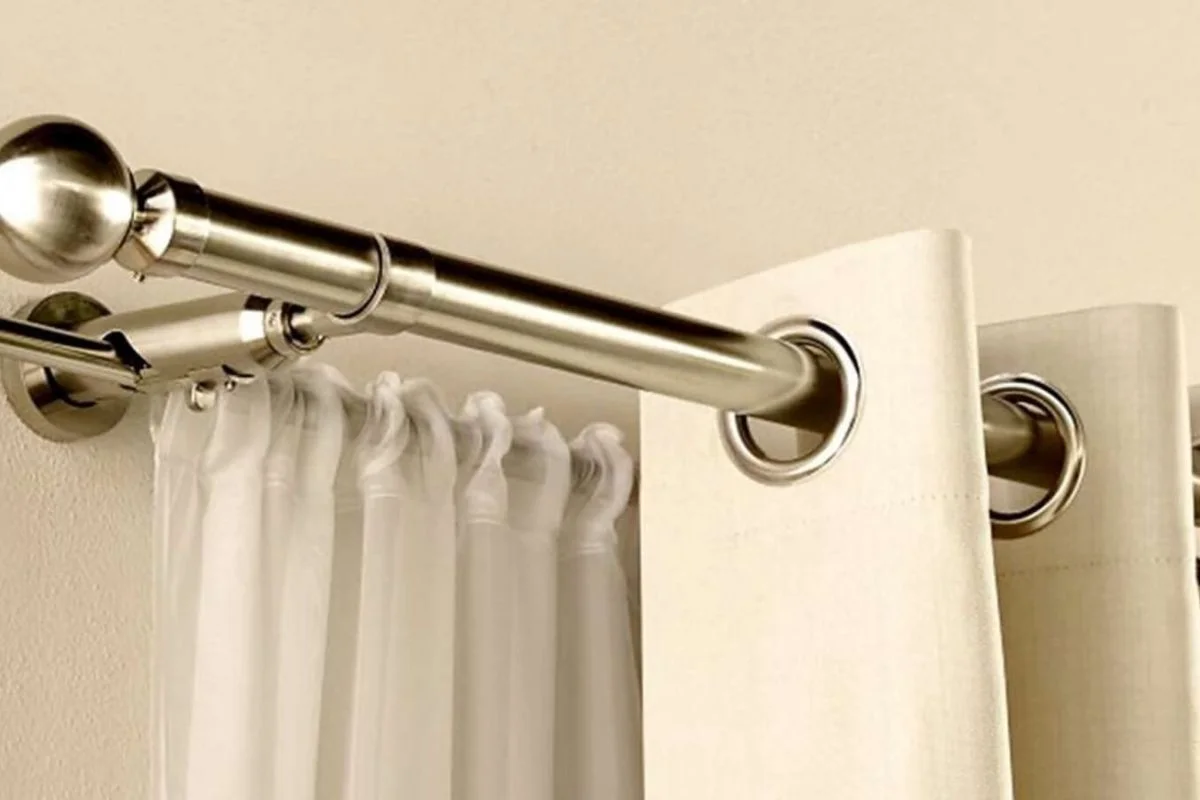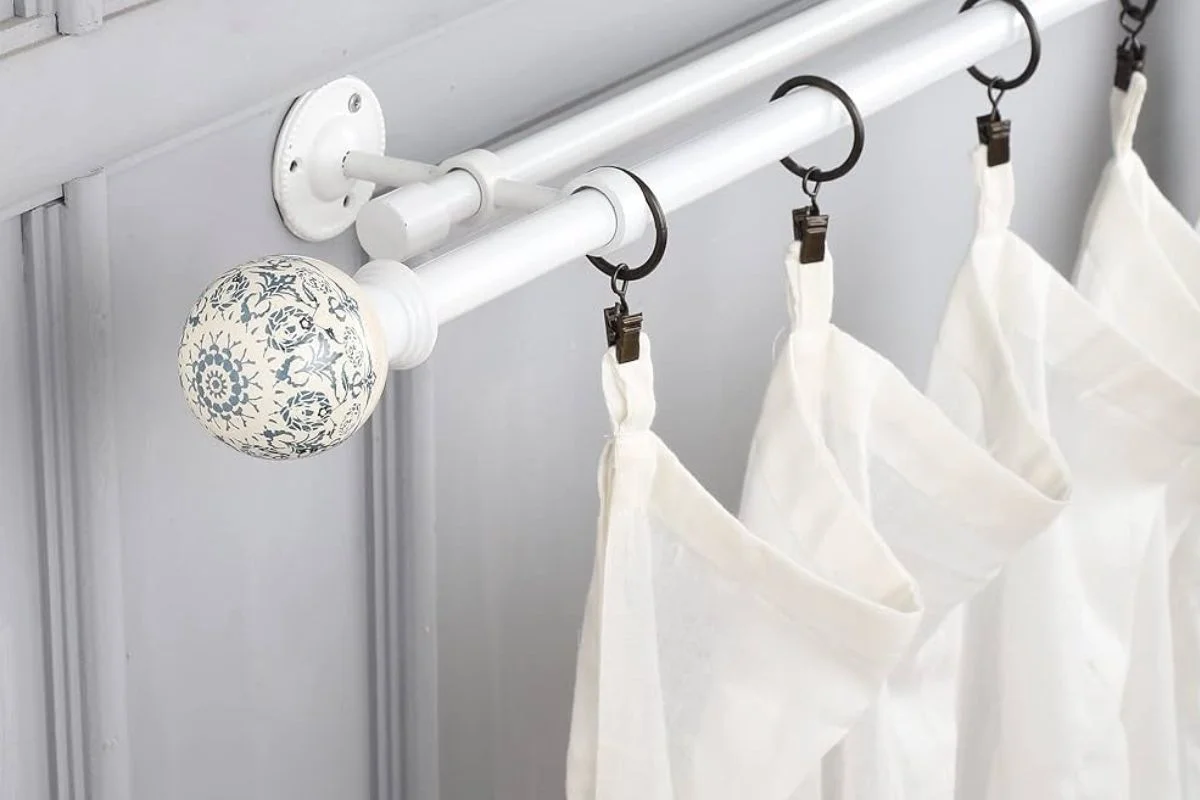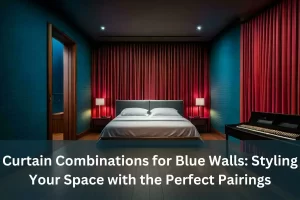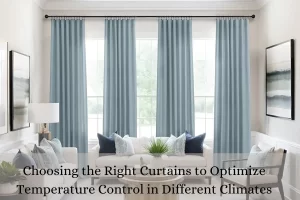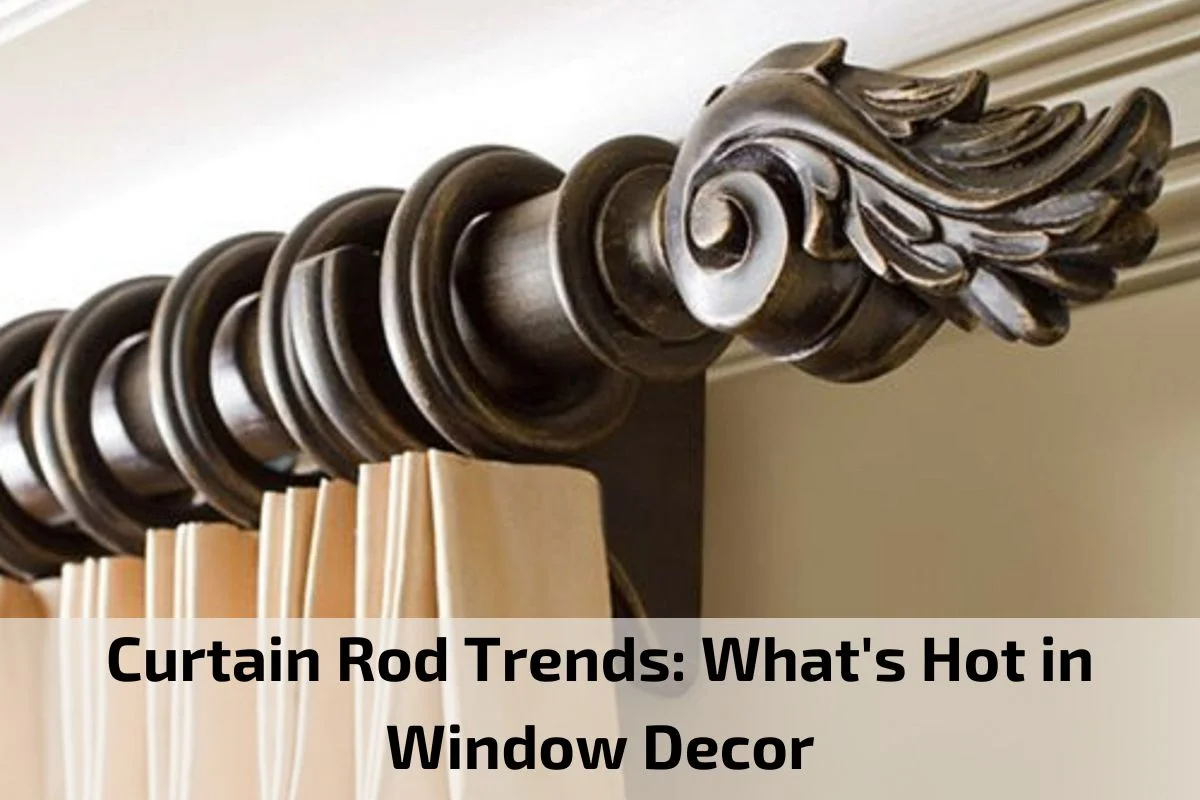
As the focal point of window treatments, curtain rods not only serve a functional purpose but also contribute significantly to the overall aesthetic appeal of a room. Just like any other aspect of interior design, curtain rod trends evolve over time, reflecting changing tastes, technologies, and design innovations. In this article, we’ll explore the latest curtain rod trends that are dominating the world of window decor. From sleek and minimalist designs to bold and statement-making styles, we’ll uncover what’s hot in curtain rods and how you can incorporate these trends into your home to create a stylish and contemporary look. Whether you’re redecorating your space or simply looking for inspiration, join us as we delve into the exciting world of curtain rod trends and discover fresh ideas to elevate your window decor game.
Importance of Curtain Rods in Window Treatments
Curtain rods play a pivotal role in window treatments, serving as the backbone that supports and enhances the functionality and aesthetic appeal of curtains or draperies. Here are several reasons why curtain rods are essential components of window decor:
Support and Stability: Curtain rods provide crucial support for curtains, ensuring they hang evenly and securely across the window. Without proper support from a sturdy rod, curtains may sag, wrinkle, or bunch up, detracting from the overall appearance of the window treatment.
Versatility: Curtain rods come in various types and designs to accommodate different curtain styles, fabrics, and window configurations. Whether you’re hanging lightweight sheers, heavy blackout curtains, or decorative valances, there’s a curtain rod designed to meet your specific needs.
Functionality: Curtain rods facilitate smooth opening and closing of curtains, allowing for effortless adjustment of light levels, privacy, and airflow in a room. Whether you opt for traditional traverse rods, modern tension rods, or decorative rods with rings, the right curtain rod enhances the functionality of your window treatments.
Aesthetic Enhancement: Beyond their practical function, curtain rods contribute to the overall aesthetic appeal of window treatments. Available in a wide range of finishes, styles, and decorative elements such as finials and brackets, curtain rods can complement the decor style of any room, adding a touch of elegance, sophistication, or whimsy.
Customization Possibilities: Curtain rods offer opportunities for customization and creativity in window decor. Homeowners can mix and match different rod styles, finials, and accessories to create unique and personalized window treatments that reflect their individual taste and style preferences.
Room Cohesion: Well-chosen curtain rods can help tie together the various elements of a room’s decor, creating a cohesive and harmonious look. By coordinating the finish and design of the curtain rods with other hardware, furnishings, and accessories in the room, you can achieve a polished and cohesive aesthetic.
Durability and Longevity: High-quality curtain rods are built to last, providing reliable support for curtains over the long term. Made from durable materials such as metal, wood, or acrylic, curtain rods withstand daily use and environmental factors, ensuring they remain functional and attractive for years to come.
Definition and Function of Curtain Rods
Curtain rods are essential hardware components used in window treatments to provide support and structure for curtains or draperies. They serve as the foundational element upon which curtains are hung, facilitating their smooth operation and enhancing the overall aesthetic appeal of the window treatment.
Definition: Curtain rods are long, typically cylindrical rods made from various materials such as metal, wood, or acrylic. They are installed horizontally above windows or doorways and are designed to hold curtains or draperies in place.
Function: a. Support: The primary function of curtain rods is to provide support for curtains, ensuring they hang evenly and securely across the window or doorway. By bearing the weight of the curtains, rods prevent sagging, wrinkling, or bunching up, maintaining a neat and polished appearance.
Hanging: Curtain rods facilitate the hanging of curtains through various attachment methods, including rod pockets, curtain rings, hooks, or clips. These attachment mechanisms allow curtains to be easily hung and removed for cleaning or replacement.
Operation: Curtain rods enable smooth opening and closing of curtains, allowing for easy adjustment of light levels, privacy, and airflow in a room. Depending on the type of rod and curtain hardware used, curtains can be drawn open or closed manually or with the help of a cord or wand mechanism.
Aesthetic Enhancement: Beyond their practical function, curtain rods contribute to the overall aesthetic appeal of window treatments. Available in a wide range of styles, finishes, and decorative elements such as finials and brackets, curtain rods can complement the decor style of any room, adding visual interest and personality.
Structural Support: In addition to supporting curtains, curtain rods may also provide structural support for other window treatment components, such as valances, swags, or cornices. They serve as a stable anchor point for these decorative elements, enhancing their appearance and ensuring they remain securely in place.
Types of Curtain Rods
Curtain rods come in various types, each offering unique features and functionalities to suit different window treatment styles and preferences. Here are some common types of curtain rods:
Standard Curtain Rods: Standard curtain rods are the most basic type and consist of a straight, cylindrical rod that spans the width of the window. They typically feature brackets for mounting onto the wall or window frame and can accommodate a variety of curtain styles, including rod pocket, tab top, and grommet curtains.
Traverse Curtain Rods: Traverse curtain rods are designed with a cord or wand mechanism that allows curtains to be opened and closed with ease. These rods are ideal for heavy or floor-to-ceiling curtains and provide smooth operation without the need for manual adjustment.
Tension Curtain Rods: Tension curtain rods are adjustable rods that use spring-loaded tension to stay in place without the need for hardware or mounting brackets. They are easy to install and remove, making them ideal for temporary or rental spaces where drilling holes is not permitted.
Decorative Curtain Rods: Decorative curtain rods feature embellishments such as finials, decorative brackets, and ornate designs that add a touch of elegance and style to window treatments. These rods are often used as statement pieces in interior design, enhancing the overall aesthetic of the room.
Double Curtain Rods: Double curtain rods consist of two parallel rods mounted on a single set of brackets, allowing for the simultaneous hanging of two layers of curtains or draperies. This type of rod is commonly used to layer sheer curtains with heavier or blackout curtains for added versatility in light control and privacy.
Magnetic Curtain Rods: Magnetic curtain rods are designed to attach to metal surfaces such as steel doors or window frames using strong magnets. They are ideal for use in spaces where drilling or mounting hardware is not feasible and provide a convenient solution for hanging lightweight curtains or valances.
Cafe Curtain Rods: Cafe curtain rods, also known as sash rods or tension cafe rods, are small, narrow rods designed for hanging lightweight cafe curtains or tier curtains. They typically feature decorative finials and are often used in kitchens, bathrooms, or dining areas.
Sash Curtain Rods: Sash curtain rods are similar to cafe rods but are typically longer and sturdier, designed to accommodate longer curtains or draperies. They are commonly used for hanging curtains on small windows, sidelights, or narrow doorways.
Choosing the Right Curtain Rods
Selecting the appropriate curtain rods is crucial to ensuring that your window treatments function properly and enhance the overall aesthetic of your space. Here are some factors to consider when choosing the right curtain rods for your windows:
Window Size and Shape:
- Measure the width of your window accurately to determine the appropriate length of the curtain rod. The rod should extend several inches beyond the window frame on each side to allow the curtains to fully cover the window when closed.
- Consider the shape of your window, including whether it is standard, bay, or corner windows, as well as any obstacles such as trim or molding that may affect the placement of the curtain rod.
Curtain Weight and Fabric:
- Take into account the weight and thickness of your curtains when selecting curtain rods. Heavier fabrics such as velvet or brocade may require sturdier rods with additional support brackets to prevent sagging.
- For sheer or lightweight curtains, consider using tension rods or cafe rods that are designed to support lighter fabrics without the need for heavy-duty hardware.
Decor Style and Theme:
- Choose curtain rods that complement the overall decor style and theme of your room. For example, select decorative rods with ornate finials and brackets for traditional or formal spaces, while opting for sleek and minimalist rods for modern or contemporary interiors.
- Consider the finish of the curtain rods, such as brushed nickel, bronze, or matte black, and choose a finish that coordinates with other hardware and furnishings in the room.
Functional Requirements:
- Determine how you want your curtains to operate, whether you prefer curtains that slide open and closed smoothly or curtains that are stationary and decorative. This will influence the type of curtain rod you choose, such as traverse rods for functional curtains or decorative rods for stationary curtains.
- Evaluate any special features or accessories you may need, such as double rods for layering curtains, magnetic rods for steel doors or windows, or adjustable rods for irregularly shaped windows.
Budget Considerations:
- Set a budget for your curtain rods and consider the cost of both the rods themselves and any additional hardware or accessories needed for installation.
- Balance cost considerations with quality and durability to ensure that you invest in curtain rods that will withstand daily use and provide long-lasting performance.
Maintaining Curtain Rods
Proper maintenance of curtain rods is essential to ensure their longevity and optimal performance in supporting your window treatments. Here are some tips for maintaining curtain rods:
Regular Cleaning:
- Dust and debris can accumulate on curtain rods over time, affecting their appearance and functionality. Use a soft cloth or duster to regularly clean the rods and brackets, removing any buildup.
- For stubborn dirt or residue, wipe the curtain rods with a damp cloth and mild detergent, then dry them thoroughly to prevent water spots or streaks.
Inspection for Damage:
- Periodically inspect the curtain rods and brackets for any signs of damage, such as rust, corrosion, or loose screws. Address any issues promptly to prevent further damage and ensure the continued functionality of the rods.
- Check the rods for any bends or warping, which can affect their ability to support curtains properly. Straighten any bent sections of the rods as needed.
Lubrication:
- Apply a small amount of lubricant, such as silicone-based spray or oil, to the moving parts of the curtain rods, including the rod ends and brackets. This will help keep the rods operating smoothly and prevent them from becoming stiff or difficult to adjust.
- Be sure to wipe away any excess lubricant to avoid attracting dust and debris, which can cause the rods to become dirty or sticky over time.
Repair or Replacement:
- If you notice any damaged or malfunctioning parts of the curtain rods, such as broken brackets or finials, repair or replace them as needed. Many hardware stores carry replacement parts that are compatible with common curtain rod systems.
- Consider upgrading to higher-quality curtain rods if you frequently encounter issues with your current rods, such as bending or sagging under the weight of heavy curtains.
Rust Prevention:
- If your curtain rods are made of metal, take steps to prevent rust and corrosion. Avoid exposing the rods to moisture for extended periods, and promptly dry them if they become wet.
- Apply a rust-resistant coating or paint to metal curtain rods to provide added protection against corrosion, especially in humid or damp environments.
Proper Storage:
- When not in use, store curtain rods in a dry and clean environment to prevent damage and corrosion. Avoid leaving them exposed to humidity or extreme temperatures, as this can accelerate deterioration.
- Consider disassembling the curtain rods and storing them in their original packaging or a protective container to prevent scratches or dents during storage.
Conclusion
In conclusion, maintaining curtain rods is essential to ensure their longevity and optimal performance in supporting your window treatments. By following the maintenance tips outlined in this guide, you can prevent damage, corrosion, and malfunctioning of the rods, ensuring they continue to provide reliable support for your curtains or draperies.

